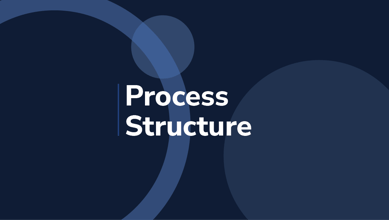Administration
Everything you need to know about the Administration area of a company.
Introduction
What will you find on this page?
What is the administration?
Formal Communication vs Informal Communication
Formal Communication vs Informal CommunicationLeer completo
TABLE OF CONTENTS
Related concepts
Main Administration theories
Known as "the new theories", new organizational proposals came up in the 20th century in order to make efforts more efficient. Below, we will name these theories chronologically:
- Scientific Theory: it was presented in the 20th century by the engineer Taylor; it proposes the application of science to the methods and elements of work. It focuses on the formal organization through what was called "departmentalization". It goes from using empirical methods to the application of scientific standards so that the quality and productivity of workers improve because of these new practices. Workers are encouraged by salaries in accordance with their tasks.
- Bureaucratic Theory: Max Weber is who proposed this theory in German in 1905. His idea is based on a centralized hierarchy that accepts a leader that distributes tasks and responsibilities and, by giving orders to the members of the organization, they carry out the tasks in a coordinated way.
- Classic Theory: The French thinker Henry Fayol proposes this theory at the beginning of the 20th century (1916). His ideas are based on a systemic approach in which all administrative principles are used together to assure a positive outcome. Hierarchical management and the division of tasks are a key part of his model.
These principles are part of his theory: command hierarchy, centralization, hierarchy, division of work, discipline, equity, order, personal compensation, stability, people staying in their position for a long time, and team spirit. The person who works is considered as “homo economicus” and should receive a salary. - Humanistic Theory: Its leading exponent is Elton Mayo, based in the USA. This theory is focused on the production processes and tries to achieve greater coordination among workers as well as a good relationship among them. Through this method, you can get greater productivity by humanizing and democratizing tasks. It is taken as a theory with a behaviorist approach since it takes workers as participants of a social group and their compensation will be "symbolic", which is a representative way of encouraging efficiency.
- Theory of behavior: Abraham Maslow is who proposes this theory in the USA in 1950. Using a diagram known as "Maslow's hierarchy of needs", he tries to explain that human motivations are guided by needs. Needs shape men's behavior. When basic needs are satisfied, you can achieve greater work standards. He had the goal of studying formal and informal organizations and organizational psychology sees humans as an individual and social being.
- Contingency Theory: this theory was developed in the 1980s by Burns, Chandler, Stalker, Lawrence, and others. It considers administration as an open system and its functioning will depend on its interaction with the environment. Consequences are studied according to the environment surrounding the commercial activity so that it is possible to anticipate them and achieve the company's goals. In general, this theory tries to explain that there are no absolute principles nor essential rules when administrating an organization; techniques must be applied accompanied by adequate control of the environment to achieve greater effectiveness.
- Structuralist Theory: In 1947, James Burnham develops this theory that is based on three pillars: organizational structure, surrounding environment, and the people who make up the company. By providing social and material incentives, this theory seeks workers to act in an open system and suggests the existence of three different levels within an organization: technical level, management level, and institutional level.
Review and difference with the Bookkeeping Area.
As it was stated before, companies usually combine the bookkeeping and the administration areas into one. Even though some of their tasks are related, we should know that these areas can work and function separately. Bookkeeping per se is focused on financial and accounting matters, it keeps accounting records and obligations, it is in charge of preparing tax settlement and of filling out its own books with all the commercial organized activity.
On the other hand, separate but not independent from the other, the administration area will receive the documents sent by the bookkeeping area and it will handle its payments; it will then sent the bills to the correct person and it will close the operations.
Therefore, even if these areas are unified in one area or if the company has two different areas for each one, they are in constant communication and work together. Effective communication with relevant, clear information is vital to have functional areas in your company.
Delve deeper into our
Business Concepts

Accrued vs. Perceived

What is a macro process?

Process structure
A short history of its beginnings and development over time
- A correct administration develops a science for each employee that replaces the empirical methods.
- It selects things scientifically, trains, and accompanies employees.
- It cooperates constantly with the employee so that every task is developed according to the principles.
- It distributes equally work and responsibility among administration and subordinates.
Benefits of having an administration area
Achieve objectives through an organisational structure and the coordinated collaboration of the people involved.
Administration in organizations
Responsibilities of the area in the company
-
Planning: he/she has to analyze the strategies and tactics used by his/her co-workers. Depending on the current needs of the company, plans could be long-term or short-term; it should also analyze the socioeconomic situation the company is in.
-
Organization: it distributes the tasks to each of the workers. It is important to keep in mind the efficient use of time. Usually, it is accompanied by specific software that helps you achieve an effective organization.
-
Management: it is related to leadership. The managing area will have to focus on influencing every member of the company so that they are comfortable and efficient. It has to make useful and accurate decisions.
-
Control: by comparing the information and the monitoring of the staff, the administrator can be aware of the mistakes that they have to correct in the future, their performance in every area of the company, the goals achieved according to the planning and how time was used
The importance of the administration of SMEs
Delves into the relationship between administration and business
What do we do in Drew?
We believe that clear processes, supported by the right technology, create an environment where people work happier, and thus make your company more productive.Supplementary material
Resources and editorial content
Practical resources on the main challenges and solutions that every company has.
Administration sessions
Meetings dedicated to particularize different problems that transit the current organizations.
Conclusion
No matter if your company is a small, medium, or large size, having an administration area duly prepared will help you carry out tasks, focus resources, organize the division of labor and, eventually, increase your sales, as well as positioning your company higher than your competitors.
%20(1).jpg?width=300&name=wp9131686%20(1)%20(1).jpg)
